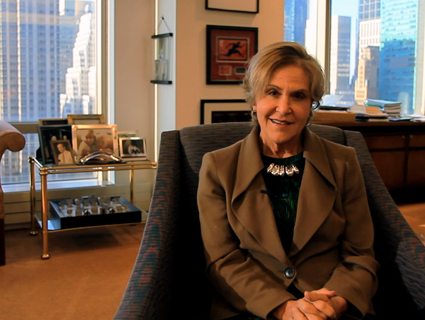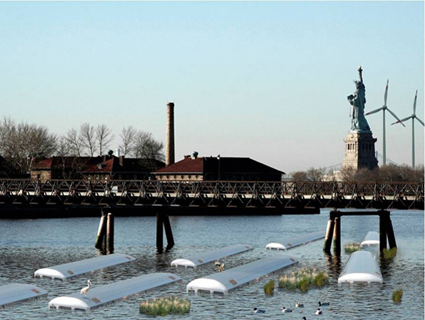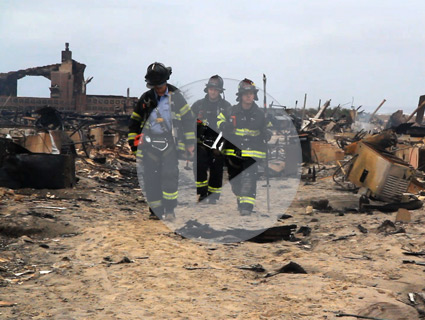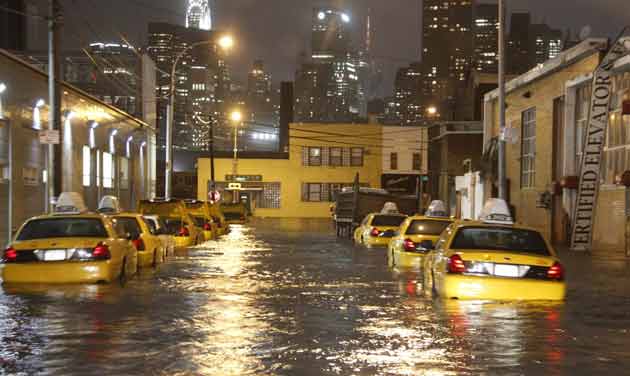
Tim McDonnell/Climate Desk
There’s no clear view of the burnt wreckage of Breezy Point, Queens, from Judith Rodin’s 21st-floor corner office in midtown Manhattan. But she’s got locals there on her mind, and wants to make sure their experience teaches the city a lesson: “We don’t want to waste that pain,” she says.
As president of the Rockefeller Foundation, Rodin is among the corps of urban policy sculptors carving out the shape of the climate-adapted cities of the future. Last week, New York Gov. Andrew Cuomo handed down her latest assignment: to ensure the nation’s biggest city is ready for the next Sandy.
Rodin is co-chair of NYS 2100, a commission Cuomo built after hearing what he described as a “wake-up call” issued by the storm. Its task is to translate the governor’s demand for heightened protection from future extreme weather into actionable infrastructure improvements that can start to roll out before the next storm clouds start to roll in, a climate-conscious overhaul of everything from subways and airports to electric transformers and sea walls that the state estimates will ultimately cost $9.1 billion.
“We want to ensure that we actually rebuild more smartly and don’t just replicate what we have, but build things that allow us to become more resilient,” she says. That last word is the key to understanding Rodin’s urban-planning philosophy, which is as much as she’s willing to divulge in the weeks before the commission formally presents its recommendations to the governor. She’s open-minded to ideas as mundane as subway air vent covers and as eccentric as storm surge-stopping “reefs” built from piles of submerged subway cars, so long as they boost the city’s “resilience”—that is, how quickly it can get back on its feet after the inevitable Big One blows through.
“This time, we want to say this isn’t just climate-related,” Rodin says. “We’re not just thinking about hurricanes or floods; we’re really thinking about any vulnerability to the system that could take it down, and how to build against that.” That means doubling up on important communication, power, and other infrastructure systems, and keeping enough distance between important pieces that if one goes down, it doesn’t drag everything down with it.
It’s a paradigm she has put into play in climate-ravaged locales worldwide, from post-Katrina New Orleans to drought-withered sub-Saharan Africa to flooded Southeast Asia.
The take-home lesson from those experiences, she says, is that to construct individual pieces of climate-proofing infrastructure is useless unless they mesh into a larger system, like dropping pieces on a chessboard with no overarching strategy. What good is a sea wall if its power source gets flooded with the earliest rising tide? What good is it to be able to keep tunnels and bridges open for cars, if they can’t get gas? Ultimately, protecting the city from climate impacts will mean reaching deep into its operating system to areas that aren’t vulnerable, per se, and imagining ways to keep the city functional through any shock, including, for example, terrorism.
Still, the challenge in New York will be to squeeze any proposals through the long, narrow pipeline of city and state bureaucracy, from the minds of their proponents to manifestation on the grimy, water-logged streets. The track record is bad: Past attempts to warn officials of climate dangers have been largely ignored, and even when reports have gotten through they’ve been stymied by head-butting between city and state authorities. But Rodin is among those chanting the popular refrain that disaster can ignite a burst of momentum on reforms that, in times of peace, get stuck.
“Often crisis is what pushes things from a report on a shelf to action,” she says. “We don’t like the opportunity to do that on the background of so much human suffering. But the moment is right, attention is on this, and for the first time, regrettably because of the storm, there will be massive resources available.”













